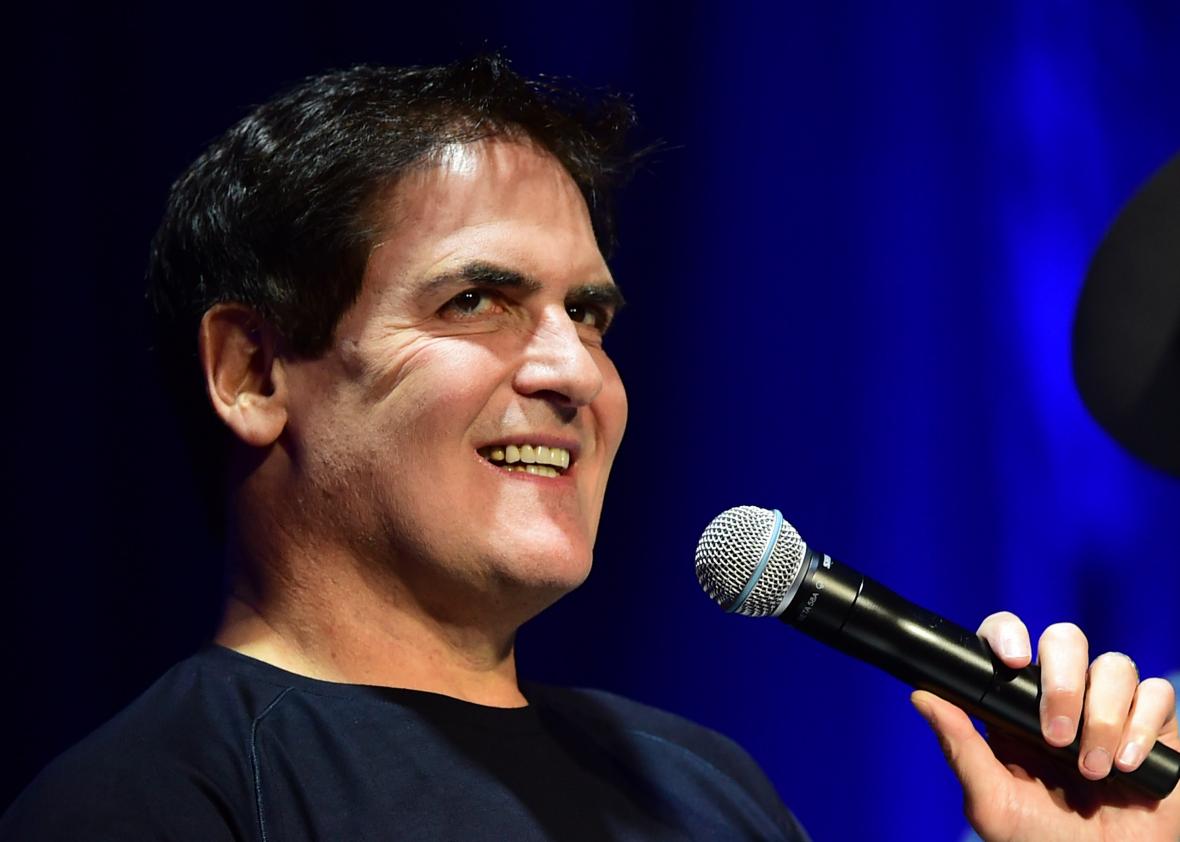Shark Tank Goes Into Feeding Frenzy Over Stupid Phones-on-Drones Idea

Photo by Frederic J. Brown/AFP/Getty Images
I have long harbored secret ambitions of appearing on the television program Shark Tank, the wildly popular reality show in which would-be millionaires beg billionaires to invest in craft projects masquerading as startup companies. I would love to become rich after selling the show’s investors on some inane and unnecessary product, like a 24/7 cufflinks delivery app or a hat that is also a lunchbox. (“Sharks, if you’re like me, you spend hours each day wondering, Where’s my lunch? Now, thanks to the Lunch Hat, you’ll always know the answer: It’s on your head!”) I know that those ideas sound stupid, but if watching Shark Tank has taught me anything, it’s that the right buzzwords and timing can make even the most tenuous idea seem brilliant—and can persuade the show’s investors to fund the production of novelty items that the world neither wants nor needs.
And so I’m not surprised that Robert Herjavec, Kevin O’Leary, Mark Cuban, Daymond John, and Lori Grenier went nuts over a drone startup the other night. Jia Tolentino at Jezebel writes that two dudes from a Sandpoint, Idaho, drone company called xCraft appeared on Shark Tank last Friday and heard the words that every entrepreneurial supplicant longs to hear: “We’re in. We’re all in.” The show’s five investors agreed to put $300,000 each into xCraft for a cumulative 25 percent stake in the company, based on the strength of a presentation that emphasized two products: a fixed-wing quadcopter that allegedly combines “hovering precision of a helicopter with the fast flight of an aircraft,” and a smartphone attachment that can turn your phone into a drone. “Much like the Wright Brothers took flight in 1903, we’re witnessing a new dawn of aviation: the age of unmanned flight,” xCraft’s J.D. Claridge told the show’s investors—and if there’s anything that startup investors like, it’s a new dawn.
Drones are the new social networking. Not only do unmanned aerial systems make it easier than ever to stalk your neighbors, but investors are clamoring to fund drone startups in hopes of a massive return once the long-promised robot-based economy takes flight. Industry lobbying groups have claimed that the drone business will add $14 billion over the next decade to California’s economy alone. Extrapolate that figure out across the entire country, and you can see why startup investors are looking at the skies and imagining them darkened with millions of miniature flying dollar signs.
But while the xCraft founders’ presentation was cool and all, and while their prototypes are slick, the company is a long way from being an actual, profitable business. The lack of any comprehensive federal regulations on commercial drone usage has sent the drone industry into a state of irrational exuberance, in which anything seems possible because the government has not yet announced what isn’t possible. That announcement is coming, though, and once it’s here, a lot of purportedly promising startups will inevitably falter when faced with Federal Aviation Administration limits on when, where, and how commercial drones are actually allowed to fly.
Will xCraft be caught up in the FAA’s impending regulatory wake? I have no idea. But I know what I would have asked the xCraft guys if I had been on the panel the other night. For one thing, while it’s cool that the X PlusOne drone is capable of “skimming the treetops at blistering speeds”—the five investors gasped when the xCraft guys told them that their drone can fly as high as 10,000 feet—I very much doubt that the FAA will ever allow recreational and commercial drones to regularly operate at that altitude. What happens to the company if and when the FAA imposes rules that requires drones to fly low and slow? I would have pressed harder for information on what the drone can be legally used for. (The founders’ answer—“You can capture a fast-moving subject, like a car, or a motorcycle, or something like that”—didn’t really do it for me.) And I’d love to know how the company’s proposed “put a drone on your phone” device will play with the FAA, which seems determined to limit the sort of ad hoc recreational drone usage that this device would seem to encourage.
There are probably great answers to these questions. And it’s also possible that the amount of money pouring into the industry at this early stage in its development will increase the chances of the government creating industry-friendly regulations. But until those regulations are here, I, for one, might choose to direct my investment dollars into something a bit more stable—like, for example, a wallet that is also a belt buckle. Sharks, you know where to find me.
This article is part of a Future Tense series on the future of drones and is part of a larger project, supported by a grant from Omidyar Network and Humanity United, that includes a drone primer from New America.
Future Tense is a partnership of Slate, New America, and Arizona State University.


